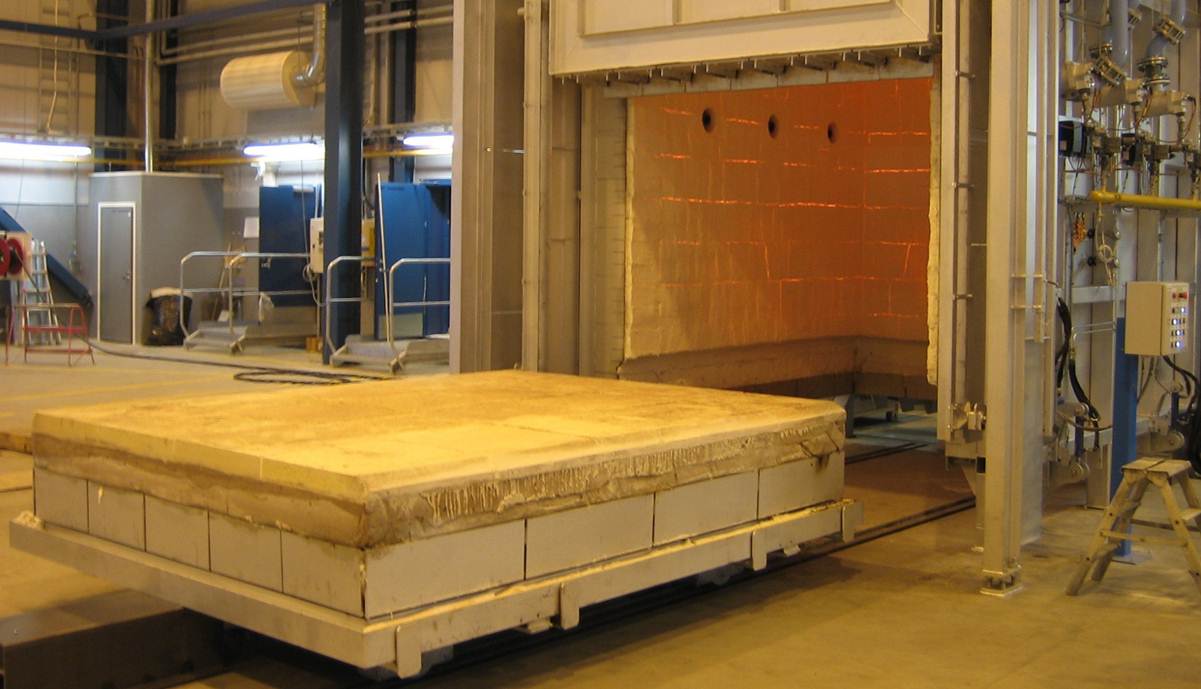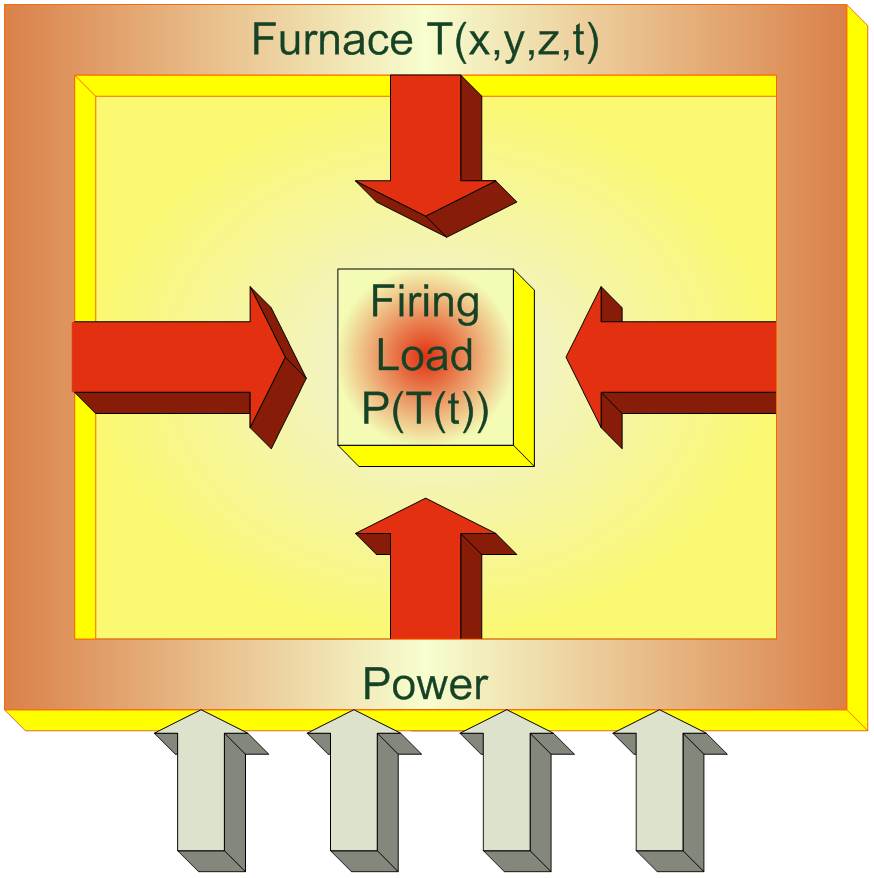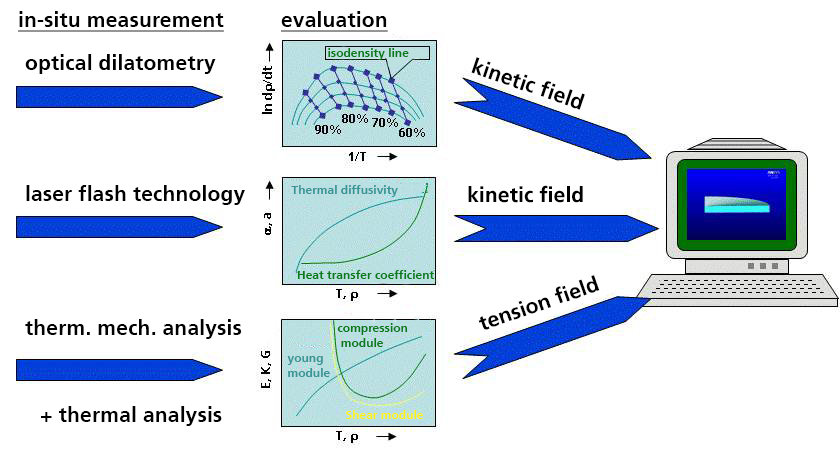Motivation
There seems to be a conflict of objectives in the optimisation of heat treatments in terms of product quality and energy efficiency as energy-saving processes with high heating and cooling rates, short holding times, low maximum temperatures or few burning aids can lead to quality problems. A precise knowledge of the response of the heat treatment material to the temperature distribution and atmosphere in the kiln system is a prerequisite for a targeted optimisation of the process parameters.
 Fraunhofer ISC, Center for High Temperature Materials and Design HTL, Bayreuth
Fraunhofer ISC, Center for High Temperature Materials and Design HTL, Bayreuth

